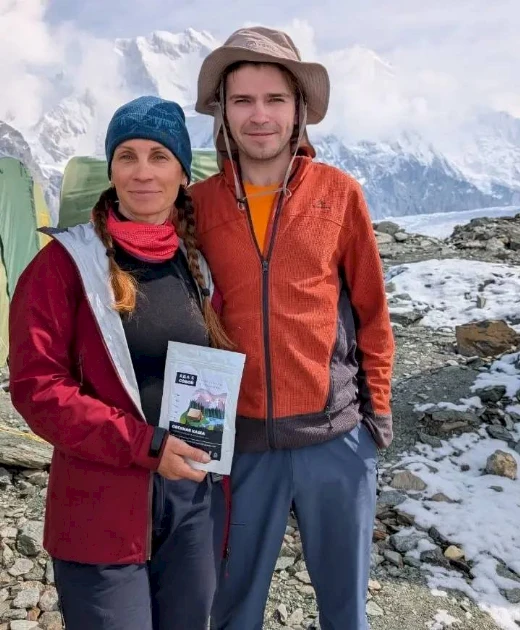Russian mountaineer Natalya Nagovitsyna: a story of courage, tragedy, and a sealed fate on Peak Pobeda

Background: mountaineering as destiny
Natalya Nagovitsyna was born in 1978 in Lysva, Perm region. Since childhood, she had been interested in tourism and from 2016 actively practiced mountaineering. In 2020, she led an expedition for the first time to the Eastern summit of Elbrus.
In 2021, during an ascent of Khan Tengri, her husband Sergey suffered a stroke and died at an altitude of 6900 m. Natalya refused to descend until Sergey passed away, and later returned there to install a memorial plaque.
In August 2025, at the age of 47, she again took part in a climb — to Peak Pobeda (7439 m), one of the most difficult peaks of the Tien Shan, together with Roman Mokrinsky (Russia), Günter Sigmund (Germany), and Luca Siniglia (Italy), whom she had known since 2021.
Tragedy at altitude: fracture, ice, and solitude
On August 12, during the descent, Natalya slipped and broke her leg, falling onto a sharp ridge. At around 7100 m her partner Roman Mokrinsky provided first aid and descended to the camp for help.
Since then, Nagovitsyna remained alone in a tent, warmed only by a sleeping bag. Temperatures dropped to –20 °C and lower, while food, water, and fuel supplies were nearly exhausted.
On August 13, Günter and Luca set out to reach her with help and supplies, but severe weather and extreme altitude complicated the route. Luca Siniglia suffered frostbite and died a day later — presumably from cerebral edema.
Deprived of hope: rescue becomes impossible
On August 17, an attempt was made to evacuate Natalya by a Mi-8 helicopter, but it failed to reach the target and made a hard landing at 4600 m — the pilot sustained a spinal compression fracture, while a rescuer suffered a pelvic dislocation.
On August 19, a group of rescuers and experienced climbers tried to reach Natalya. Drone footage showed her in the tent, but her condition remained critical — still without food and water.
On August 23, the rescue operation was stopped: the base camp was dismantled and rescuers had to withdraw. The Kyrgyz Ministry of Emergency Situations admitted that Nagovitsyna had likely died.
On August 24–25, the Russian Mountaineering Federation announced plans to try to send a drone to her and, in the event of rescue, to use an Airbus H145 helicopter with an Italian pilot, capable of landing at around 6962 m, close to Nagovitsyna’s location (~7200 m).
On August 25, the attempt to launch the drone failed due to weather conditions: instability of the atmosphere prevented a safe launch.
Russian rescuers declared the season closed — the operation could only be resumed in summer 2026, when conditions improve.
Meanwhile, the Italian team, which had earlier promised to evacuate her, unexpectedly left Kyrgyzstan without beginning the rescue.
You may also be interested in:
- Traffic on Ecevit Street in Kyrenia will be temporarily closed
- Police: attack at a hotel in Kyrenia, detention of a drunk offender in Zümrütköy, and 7 arrests for illegal residence
- At night in Kyrenia, Ecevit Street will be closed: traffic will be stopped from 21:00 to 05:00
- Citrus Producers’ Union announces an indefinite strike from December 22 in Northern Cyprus
- 21-year-old driver Gizem Gümüşsoy died in a road accident on the Ulukışla road in Northern Cyprus


